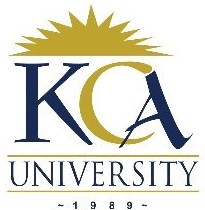
UNIVERSITY EXAMINATIONS: 2017/2018
EXAMINATION FOR THE DEGREE OF BACHELOR OF SCIENCE IN
INFORMATION TECHNOLOGY / BACHELOR OF BUSINESS IN
INFORMATION TECHNOLOGY
BIT 3202A/BIT4306: DISTRIBUTED DATABASES/ ADVANCED
DATABASE SYSTEMS
FULL TIME/PART TIME/DISTANCE LEARNING
DATE: DECEMBER, 2017 TIME: 2 HOURS
INSTRUCTIONS: Answer Question One & ANY OTHER TWO questions.
QUESTION ONE
a) Explain the two design strategies for database systems 3 Marks
b) Explain the implicit assumptions associated with distributed database management
systems 6 Marks
c) Examine the different ways used to ensure naming transparency 6 Marks
d) A reference model can be thought of as an idealized architectural model of the system.
Commercial systems might deviate from reference model; still they are useful for the
standardization process. Describe the different approaches used to describe a reference
model 9 Marks
e) Explain the dimension for the analysis of distributed systems 6 Marks
QUESTION TWO
a) Examine the different types of replication and allocation 6 Marks
b) Discuss how authorization control is facilitated in databases 8 Marks
c) Describe the three types of integrity constraints/assertions 6 Marks
QUESTION THREE
a) Outline the benefits of fragmentation 5 Marks
b) Explain how a fragment allocation problem is formulated 7 Marks
c) Examine the different levels of DB consistency 8 Marks
QUESTION FOUR
a) Explain the three phenomena/situations that occur if proper isolation is not maintained
6Marks
b) Discuss using an example the concept of conflict equivalence as used in distributed
databases concurrency control 5 Marks
c) Discuss the various extensions of the 2PL to DDBMS 9 Marks
QUESTION FIVE
a) Differentiate between Distributed processing and Cooperative processing
2Marks
b) Explain the following Four strategies regarding placement of data
i) Centralized 2 Marks
ii) Partitioned 2 Marks
iii) Complete Replication 2 Marks
iv) Selective Replication 2 Marks
c) In your own opinion which architecture is suitable for distributed databases
4Marks
d) Query processing is a three step process that transforms a high-level query of relational
calculus/SQL into an equivalent and more efficient lower-level query of relational
algebra. Describe the activities involved in Query processing 6 Marks
